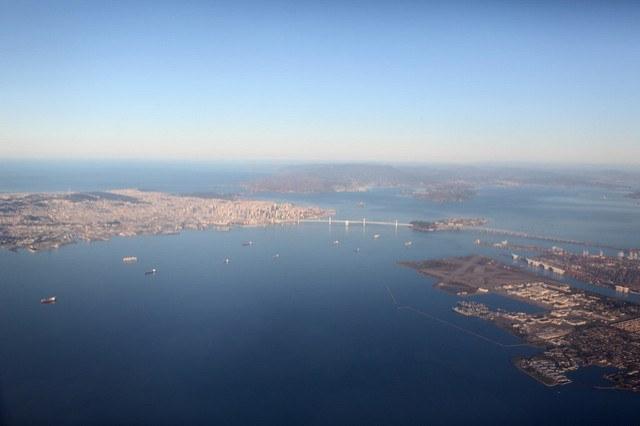
Some Bay Area leaders want to merge the region into a single government. Creating a more modern framework to connect the San Francisco Bay Area's myriad cities, counties and municipalities could be the catalyst to the regional thinking we need to tackle growing challenges.
The lack of integration between neighboring cities have been an issue for some time in the United States -- ever since, in the 1960s and '70s, waves of mostly white families fled to suburbs in response to initiatives such as desegregation and integration in older city centers. The suburbs to which they moved quickly worked to keep taxpayer money within their own borders, leading to situations where urban areas did not have the money to maintain public services. The most extreme example of this is in Detroit, a city with a minuscule white population and which can barely maintain even the most basic city services.
The suburbs of Kansas City, where I grew up, was no different. My school district was among the richest in the country, but just a few miles up the freeway was our own little Detroit -- Kansas City, Kansas -- with failing schools, potholed roads and, of course, a large minority population. This drive to keep money within artificial city boundaries creates these unfair absurdities. It also has the unfortunate side effect of creating low-density cities with large environmental footprints due to the car-centric design of most suburbs.
Today, most modern American metropolitan areas are, unlike 50 or 60 years ago, majority-suburb cities, in which far more people live outside the city center than before. Though nearly all of us cross these dotted lines every day -- on our way to work, to see friends or to attend leisure activities such as sporting events -- the city we live in often constrains our ability to think regionally.
The Bay Area is an extreme example of this because, unlike most large American metropolitan areas, it does not even have a single major city at its center. While San Francisco is the main economic center, it is only the second largest city in the region after San Jose, and most of the biggest companies in the Bay Area – Google, Facebook, Kaiser or Genetech – are not headquartered in SF. And this doesn't even take into consideration the populous East Bay, where I reside.
Yet, as anyone living in the Bay Area can attest to, what happens in one part of the region affects all of us. The tech boom began in Silicon Valley, some 50 miles away from where I live, yet the housing issues, gentrification and traffic congestion affect the East Bay as well. The decisions made by cities in the peninsula to not properly fund Caltrain, and to maintain height restrictions even around transit centers. affects the entire region – even though the vast majority of the region's residents have no say in these decisions.
This connects to a larger global issue – urbanization, and how cities are becoming entities upon themselves, the engines of growth and innovation.
"Powerful regions are the new basic unit of governments in the 21st century," said technology forecaster Paul Saffo at a conference focused on merging the Bay Area. "City-states are the powerful nexus of power, commerce, culture and identity."
Together, the Bay Area is the 21st largest economy in the world and the powerhouse fueling America's economic recovery. But separately, we are duplicating services, mired with outdated infrastructure, limited housing and losing potential. The Bay Area is a mess of multiple counties, cities and suburbs, with no overarching authority to address regional challenges. This is why we have 29 different transit systems that rarely, if ever, integrate, and why is it so difficult to expand regional infrastructure.
Merging some functions – for example, transit systems -- or putting more power into existing but weak regional authorities, such as the Association of Bay Area Governments, would be a start.
The Bay Area is stuck with a 19th-century system of governance. Perhaps it's time to recognize that we don't live in 101 different cities, but one region that deserves a unified voice to address the challenges and opportunities of the present and the future.
Image credit: Brian Solis via Flickr

Nithin Coca is a freelance journalist who focuses on environmental, social, and economic issues around the world, with specific expertise in Southeast Asia.














